The 2019-20 season is nearly upon us. Defending NCAA champion Baylor starts out near the top, but Oregon and player of the year front-runner Sabrina Ionescu open at No. 1 in espnW's preseason Top 25 rankings.
The Pac-12 occupies three of the top six spots and has five teams in the poll. But the ACC and SEC lead the way with six ranked teams apiece.
Charlie Creme, Graham Hays and Mechelle Voepel voted to determine our rankings; Creme provides the analysis for each team.
1. Oregon

2018-19: 33-5; lost in Final Four
Since Sabrina Ionescu and Ruthy Hebard arrived, the Ducks have twice reached the Elite Eight twice and also advanced to their first Final Four. Ionescu (19.9 PPG, 8.2 APG) returned to Eugene instead of entering the WNBA for one reason: to finish the job and win a national championship. With the ultra-efficient Hebard (16.1 PPG, 67.0 field goal percentage) in the middle and 6-4 junior Satou Sabally (16.6 PPG) creating matchup mismatches on the perimeter, Kelly Graves has the most potent offensive trio in the country. Throw in USC graduate transfer Minyon Moore --who will take the place of the departed Maite Cazorla in the backcourt, allowing Ionescu to play off the ball -- and 6-2 junior Erin Boley (43.0 percent 3-point shooter), and the Ducks could average 90 points per game. How they defend the post in crucial moments might determine if Ionescu fulfills her goal of winning it all.
2. Baylor

2018-19: 37-1; won national championship
What could make the title race that much more interesting is that Oregon's biggest weakness is Baylor's greatest strength. The Lady Bears have a surplus of interior depth, beginning with 6-4 Lauren Cox (13.0 PPG, 8.3 RPG). Healthy after suffering a knee injury in the national championship game last April, Cox will be Ionescu's biggest challenger for every national player of the year award. NaLyssa Smith (8.4 PPG, 5.1 RPG), a 6-2 sophomore who could be ready for a breakout season, 6-foot Aquira DeCosta and 6-3 Queen Egbo give Baylor the kind of talent and size that will be unmatched in the Big 12 as the Lady Bears go for a 10th consecutive conference championship. The key to repeating as national champions will likely be South Carolina graduate transfer Te'a Cooper's ability to play the point the way another grad transfer, Chloe Jackson, did a year ago as the Final Four's Most Outstanding Player.
3. UConn

2018-19: 35-3; lost in Final Four
The bar has been set so high at UConn that going three straight seasons without a national championship seems staggering. Or, perhaps, it put into perspective just how historic winning the title six of the previous eight seasons was. The Huskies aren't the favorite to win a 12th overall, but if a higher-than-normal number of questions are answered, reaching a 12th consecutive Final Four is very much in play. If junior Megan Walker (12.1 PPG, 6.7 RPG) and sophomore Christyn Williams (11.7 PPG, 3.2 RPG) take additional steps forward, Geno Auriemma has two All-America-caliber players. If Tennessee transfer Evina Westbrook (14.9 PPG) is granted immediate eligibility, UConn will have a variety of ballhandling and perimeter scoring options. If Murray State transfer Evelyn Adebayo (18.2 PPG, 11.4 RPG) can transition to a higher level of competition quickly, it softens the blow of losing Napheesa Collier. Crystal Dangerfield (13.4 PPG, 5.9 APG), one of the nation's best and most consistent point guards, is a given if completely healthy from offseason hip surgery.
4. Stanford

2018-19: 31-5; lost in Elite Eight
With so much depth and potential versatility, highlighted by four returning starters and the nation's second-ranked recruiting class, the challenge for Cardinal coach Tara VanDerveer might be finding that perfect rotation. Any combination will almost certainly start with veteran guards Kiana Williams (14.3 PPG, 4.7 APG) and DiJonai Carrington (14.0 PPG, 7.5 RPG). Haley Jones, a 6-1 freshman who was the HoopGurlz No. 1-rated recruit, should also provide plenty of scoring, but her ability to play multiple positions should allow Stanford to experiment with different lineups. Lacie (4.8 PPG) and Lexie Hull (5.6 PPG), along with freshman Hannah Jump will also contribute plenty in the backcourt. Maya Dodson (7.0 PPG, 4.5 RPG) and Nadia Fingall (8.0 PPG, 4.9 RPG) will try to replace the production lost with Alanna Smith's graduation. How much freshman Fran Belibi, a 6-1 forward who has only been playing basketball since the ninth grade, can develop as a low post threat and defensive presence could be the key to challenging Oregon for Pac-12 supremacy.
5. Maryland
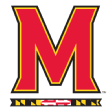
2018-19: 29-5; lost in NCAA tournament second round
Coach Brenda Frese is high on her incoming freshmen, but it's her veterans who have felt the sting of consecutive second-round NCAA tournament losses. Led by first-team All-America candidate Kaila Charles (17.0 PPG, 6.7 RPG), the Terps are heavy favorites to repeat as Big Ten champions and are Final Four contenders. Charles' senior classmates Blair Watson (8.3 PPG, 4.0 RPG) and Stephanie Jones (12.8 PPG, 6.0 RPG) are joined by sophomores 6-5 Shakira Austin (8.4 PPG, 9.5 RPG) and Taylor Mikesell (13.4 PPG, 41.1 3-point percentage), who set a school record last season with 95 3-pointers, in the starting lineup. Point guard Ashley Owusu and 6-1 Diamond Miller headline the freshman class and should push for significant minutes.
6. Oregon State

2018-19: 26-8; lost in Sweet 16
This might be Scott Rueck's best team at Oregon State. The Beavers' size and versatility exceeds that of the 2016 Final Four team and puts them in position to challenge Oregon and Stanford in a loaded Pac-12. The foundation rests on veteran guards Mikayla Pivec (15.2 PPG, 9.2 RPG) and Destiny Slocum (15.4 PPG, 4.5 APG), who were both all-conference selections last season, and Aleah Goodman (10.7 PPG, 2.6 APG). Taya Corosdale (6.9 PPG, 7.8 RPG), a 6-3 junior forward, was a big contributor last postseason, but she might have to fight off freshmen Kennedy Brown, who's 6-6, and 6-4 Taylor Jones, who were both high school All-Americans a year ago, and 6-9 Andrea Aquino, who was the top recruit in program history two years ago, for playing time.
7. Louisville

2018-19: 32-4; lost in Elite Eight
Now that Georgia Tech transfers Elizabeth Balogun and Elizabeth Dixon have been declared eligible to play immediately, the Cardinals are the favorites to win the ACC. Balogun (14.6 PPG) gives coach Jeff Walz a bona fide No. 1 scoring option, which he desperately needed after the graduation of Asia Durr, the program's second-leading scorer. The 6-5 Dixon (11.0 PPG) will play alongside seniors Kylee Shook (7.1 PPG, 6.0 RPG) and Bionca Dunham (7.6 PPG, 4.7 RPG) in a frontcourt that might have been a little thin before Dixon's arrival. Junior guard Dana Evans (10.4 PPG, 4.0 APG) and senior guard Jazmine Jones (7.6 PPG, 4.6 RPG) will likely absorb more of scoring load, too.
8. South Carolina
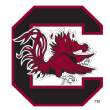
2018-19: 23-10; lost in Sweet 16
Dawn Staley securing the top recruiting class in the country came at the perfect time. She lost seven players from last year's Sweet 16 team, including three transfers. Now that freshman class will have to deliver right away if the Gamecocks are to win the SEC. Aliyah Boston, a 6-5 post player, point guard Zia Cooke and forward Laeticia Amihere were all considered top-10 recruits. The possibility of Boston playing next to the athletic Mikiah Herbert Harrigan (10.4 PPG, 5.1 RPG), who returns to Columbia for her senior season after contemplating a transfer, could provide Staley with a potent and productive frontcourt tandem. Staley would welcome more production from sophomore guard Destanni Henderson (5.5 PPG, 1.6 RPG) to help senior point guard Ty Harris (10.9 PPG, 5.3 RPG) and ease the loss of leading scorer Te'a Cooper, who took her team-leading 11.9 PPG to Baylor.
9. Texas A&M

2018-19: 26-8; lost in Sweet 16
As she proved in last season's NCAA tournament, Chennedy Carter has the ability to shoot the Aggies into almost any game. The country's second-leading returning scorer (23.3 PPG) is probably the best one-on-one player in the game. If Carter plays with more consistency and efficiency, Texas A&M's ceiling gets even higher. And Carter won't have to do it alone. The Aggies also bring back fellow juniors Kayla Wells (15.1 PPG, 3.3 RPG), Aaliyah Wilson (back from injury), Ciera Johnson (12.0 PPG, 8.4 RPG) and N'dea Jones (7.7 PPG, 11.3 RPG) to compete for a title in the most wide-open SEC race in years.
10. Mississippi State
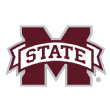
2018-19: 33-3; lost in Elite Eight
As if replacing Teaira McCowan wasn't tough enough, her prospective replacement, Ole Miss transfer Promise Taylor, is still working her way back from an ankle injury and might not be available right away. The Bulldogs' season could depend on Taylor, a 6-5 center who averaged 8.3 PPG and 6.0 RPG while shooting 60.7 percent from the field two seasons ago with the Rebels. Without a healthy Taylor, coach Vic Schaefer might need Chloe Bibby to quickly return from a torn ACL suffered last January. Before her injury, Bibby was the Bulldogs' most accurate 3-point shooter (45.0 percent), and putting her on the floor with two other solid shooters in Bre'Amber Scott (7.1 PPG) and Andra Espinoza-Hunter (9.0 PPG) would allow Mississippi State to offset the lack of inside scoring early in the season. The return of Jordan Danberry (13.1 PPG, 3.5 APG), granted another year of eligibility by the NCAA, gives Schaefer a floor leader to lean upon while the rest of the roster acclimates to new roles.
11. Florida State

2018-19: 24-9; lost in NCAA tournament second round
Last season, the Seminoles were inexperienced, injury-plagued and not very deep (just nine scholarship players) -- and still finished in the top half of the ACC and earned a No. 5 NCAA tournament seed. With everyone on the roster returning and what should be a wide-open conference race, expectations have ramped up in Tallahassee. Kiah Gillespie, a 6-2 senior, led Florida State in points (16.2 PPG), rebounds (9.3 RPG) and 3-pointers (53) and should push for All-America status. Point guard Nicki Ekhomu (15.0 PPG, 4.0 APG) and Nausia Woolfolk (13.5 PPG, 4.2 RPG) are now a veteran backcourt. Coach Sue Semrau expects her freshmen to contribute right away, especially 6-5 River Baldwin, who could give the Seminoles the post threat they didn't have last season.
12. UCLA

2018-19: 22-13; lost in Sweet 16
Put the Bruins in another conference and they might be favored to win it. In the Pac-12, they have to battle three of the top six teams in the country. Led by junior Michaela Onyenwere (18.3 PPG, 8.5 RPG) and senior point guard Japreece Dean (14.1 PPG, 4.9 APG), UCLA has the ability to compete with Oregon, Stanford and Oregon State, with its sights set on reaching at least the program's fifth straight Sweet 16. The Bruins will need to improve from the 3-point line, where they shot just 30.6 percent a year ago. The healthy return of junior guard Chantel Horvat, and having Baylor transfer Natalie Chou on the floor, should help. Dean should also get more open looks with the arrival of five-star recruits Charisma Osborne and Jaden Owens.
13. NC State

2018-19: 28-6; lost in Sweet 16
With the success of Notre Dame and Louisville, it's easy to forget that the Wolfpack led the ACC for much of last season, despite some major injuries. Wes Moore was runner-up for national coach of the year, and NC State's 28 wins were the second-most in program history. If healthy, NC State should be in for another big season. The return of point guard Kaila Ealey, who missed all of last season (knee), would allow senior Aislinn Konig (10.7 PPG, 40.7 3-point percentage) to get more shots from 3-point range, her biggest strength. Getting back Grace Hunter (14.6 PPG, 6.9 RPG) to 100 percent -- she was the team's leading scorer before a knee injury in January -- will give Moore a versatile backcourt to put around budding star Elissa Cunane (13.6 PPG, 6.3 RPG) in the middle. The 6-5 center could be one of the best post players in the country as a sophomore.
14. Kentucky
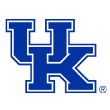
2018-19: 25-8; lost in NCAA tournament second round
Replacing his starting backcourt got easier for coach Matthew Mitchell with the arrival of Arizona State transfer Sabrina Haines and Texas transfer Chasity Patterson (eligible after the first semester), the top-rated high school point guard two years ago. They'll be fitting in around versatile espnW national freshman of the year Rhyne Howard (16.4 PPG, 6.6 RPG), who can produce from anywhere on the floor. No one else on the roster averaged more than 6.9 PPG last season, so improvement from players like forwards KeKe McKinney (4.3 PPG, 4.9 RPG) and Tatyana Wyatt (6.9 PPG, 3.8 RPG) will help determine how relevant the Wildcats are in the SEC race.
15. Texas

2018-19: 23-10; lost in NCAA tournament first round
Last season never really got going for the Longhorns and ended with a disappointing early NCAA tournament exit. Coach Karen Aston has vowed to not let that happen again. It likely won't if her senior backcourt of Sug Sutton (12.7 PPG, 5.4 APG) and Lashann Higgs (13.8 PPG in four games) can stay healthy. Higgs missed most of last year with a knee injury, which proved to be the blow Texas couldn't fully overcome. Senior Joyner Holmes (11.8 PPG, 6.7 RPG) and sophomore Charli Collier (5.9 PPG, 4.3 RPG) have the potential to be a dominant frontcourt duo but have yet to live up to expectations. If they do, Texas will look more like the Sweet 16 program it was from 2015 to '18.
16. Notre Dame

2018-19: 35-4; lost in title game
The core that led the Irish to consecutive national championship game appearances and one NCAA title is gone. Not only did all five starters depart, but Jordan Nixon and Danielle Patterson transferred, and top assistant coach Niele Ivey left for the NBA's Memphis Grizzlies. Hall of Fame coach Muffet McGraw might have to rely heavily on youth, namely highly regarded freshmen Sam Brunelle and Anaya Peoples. The early part of the season in which the Irish already have the challenge of playing Tennessee, Michigan and Michigan State before Thanksgiving, will see McGraw blending her two star recruits with transfers Destinee Walker (North Carolina) and Marta Sniezek (Stanford), and returnees Mikayla Vaughn, Abby Prohaska (1.5 PPG, 1.8 RPG), Katlyn Gilbert (coming off a redshirt season due to a shoulder injury), and Danielle Cosgrove. Keeping the 6-3 Vaughn (3.3 PPG, 2.4 RPG) and 6-4 Cosgrove (1.4 PPG, 0.7 RPG) healthy and on the court will be a key to a thin frontcourt and Notre Dame's chances to stay near the top of the ACC.
17. Minnesota

2018-19: 21-11; lost in WNIT second round
Lindsay Whalen's first season as head coach at her alma mater was a bit of a roller-coaster ride, but she was able to turn a 2-7 Big Ten start into a 9-9 finish and a trip to the second round of the WNIT. Despite the loss of top scorer Kenisha Bell, the Gophers should be better this season. Destiny Pitts (16.3 PPG, 4.1 RPG), Taiye Bello (9.7 PPG, 11.9 RPG) and Jasmine Brunson (8.4 PPG, 2.5 RPG) are back. The healthy return of guard Gadiva Hubbard, who averaged 13.6 PPG in 2017-18 but missed all of last season with a foot injury, might be the final piece to getting back to the NCAA tournament.
18. Miami

2018-19: 25-9; lost in NCAA tournament second round
While it didn't have the same national impact as Sabrina Ionescu's decision to return to Oregon, Beatrice Mompremier's decision to forgo the WNBA draft and stay with the Hurricanes was huge. With the return of the 6-4 center, Katie Meier, in her 15th season as Miami's coach, has an ACC contender. Without Mompremier (16.7 PPG, 12.2 RPG), the Hurricanes would have projected to finish in the bottom half of the conference, and it's up to junior point guard Mykea Gray (12.6 PPG, 2.2 APG) to run the offense through the Canes star. Junior Kelsey Marshall (7.8 PPG, 37.4 3-point percentage), who led the Hurricanes in 3-point field goal attempts (179) and makes (67) last season, could be that third scorer.
19. Arizona

2018-19: 24-13; WNIT champion
The past two WNIT champs (Michigan and Indiana) have not only made the NCAA tournament the following year but won first-round games. With all five starters back, the Wildcats are a good bet to make that three in a row and finish in the top half of the Pac-12 for the first time since 2011. Aari McDonald, a 5-6 junior point guard, is the top returning scorer in the country (24.1 PPG). Forward Cate Reese, a Pac-12 all-freshman team selection, was the other double-figure scorer (11.8 PPG), and even more help arrives in Penn State grad transfer Amari Carter, a guard who averaged 10.5 points per game in her three-year Big Ten career.
20. Arkansas
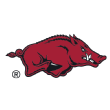
2018-19: 22-15; lost in WNIT third round
For three days at the SEC tournament, the Razorbacks were the talk of college basketball with their run to the conference title game. Their goal this season is to extend the conversation. Junior Chelsea Dungee (20.5 PPG, 4.3 RPG) put herself on the national radar that week and will be one of the top scorers in the SEC this season. Third-year coach Mike Neighbors also has five of his next six top scorers from a year ago back. Guard Amber Ramirez, a former McDonald's All American, is eligible after her transfer from TCU and could be the perfect running mate for Dungee. Ramirez averaged 10.4 points per game in 2017-18.
21. DePaul

2018-19: 26-8; lost in NCAA tournament first round
Despite some heavy graduation losses, the Blue Demons are once again the favorites to win the Big East. With a core group of Chante Stonewall (14.3 PPG, 6.6 RPG), Kelly Campbell (7.5 PPG, 7.7 RPG, 5.1 APG) and Lexi Held (8.3 PPG, 39.0 3-point percentage), DePaul will still play fast, space the floor and shoot plenty of 3-pointers, a stat the Blue Demons led the nation in a year ago (373 of 1,121). Look for sophomores Maya Stovall and Sonya Morris, both St. Louis natives, to play bigger roles.
22. Drake

2018-19: 27-7; lost in first round
The Bulldogs have lost just once in the Missouri Valley Conference in three years and have played in three consecutive NCAA tournaments. With Becca Hittner and Sara Rhine back for their senior seasons, a fourth consecutive year of dominance seems likely. Advancing in the tournament is the one part that is missing. Hittner (19.7 PPG, 5.2 RPG, 40.4 3-point percentage) is the favorite to win the MVC Player of the Year award for the third straight year and leads an offense that was 10th in the country with 80.5 PPG. Rhine (18.3 PPG, 8.3 RPG, 61.2 field goal percentage) does most of her damage in the paint and is a big reason why the Bulldogs also ranked ninth in the nation in field goal percentage (47.6 percent). The addition of Washington transfer Kierra Collier, who averaged 6.6 PPG as a freshman in the Pac-12, could be the missing piece to more success in March.
23. Michigan

2018-19: 22-12; lost in NCAA tournament second round
The Wolverines hope to avoid another slow start to Big Ten play and give themselves a chance to compete for a top three spot in the conference. After a 3-6 start last season, Michigan transformed into one of the league's best teams. Forward Naz Hillmon (13.1 PPG, 7.0 PRG, 62.8 field goal percentage), last season's leading scorer and rebounder, and guard Amy Dilk (7.2 PPG, 4.4 APG), who led Michigan in assists, are just sophomores. Another jump by 6-1 junior Hailey Brown (7.8 PPG, 4.0 RPG) would give coach Kim Barnes Arico a big boost.
24. Indiana

2018-19: 21-13; lost in NCAA tournament second round
The Hoosiers have a WNIT championship and a second-round NCAA tournament appearance in the last two seasons and could be ready for even bigger things. The top four scorers return, led by junior guards Ali Patberg (15.8 PPG, 4.8 APG) and Jaelynn Penn (13.9 PPG, 3.6 RPG), who form one of the Big Ten's best backcourts. Senior forward Brenna Wise (12.0 PPG, 6.8 RPG) joined them as an all-conference selection and was the Hoosiers' most accurate 3-point shooter. The core, one year older, should help Indiana improve upon last season's 10th-place Big Ten finish. A move into the top three isn't out of the question.
25. Tennessee

2018-19: 19-13; lost in first round
Not everything in Knoxville is new. It just seems that way. After head-coaching stints at Western Carolina (2004-09), NC State (2009-13) and Missouri State (2013-19), Kellie Harper returns to lead her alma mater and will try to inject a different energy into a program that was close to missing the NCAA tournament last March. The roster Harper inherits will look different, too. Only two of the top six scorers from a year ago are back (leading scorer Evina Westbrook transferred to UConn). Junior Rennia Davis (14.9 PPG, 7.7 RPG) will be asked for even more production and Zaay Green (9.6 PPG, 4.0 RPG) might need to make big jump in her second season if Tennessee is to reestablish itself as an SEC contender. Jordan Horston, a 6-2 freshman, was the No. 2 prospect in the country coming out of high school and stuck to her commitment after Holly Warlick's dismissal. She has the potential to be the next Lady Vols star.
